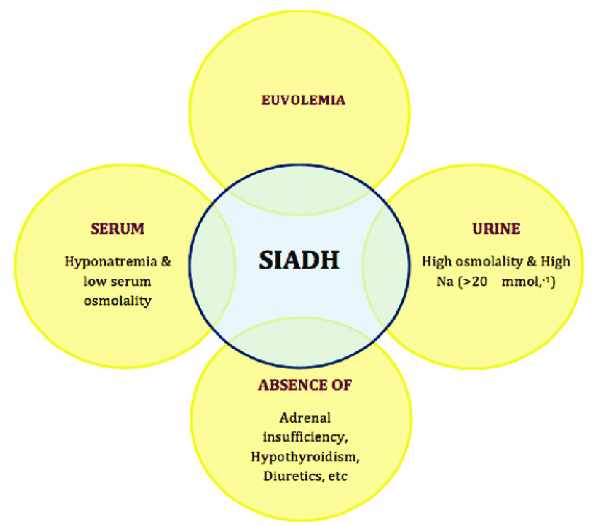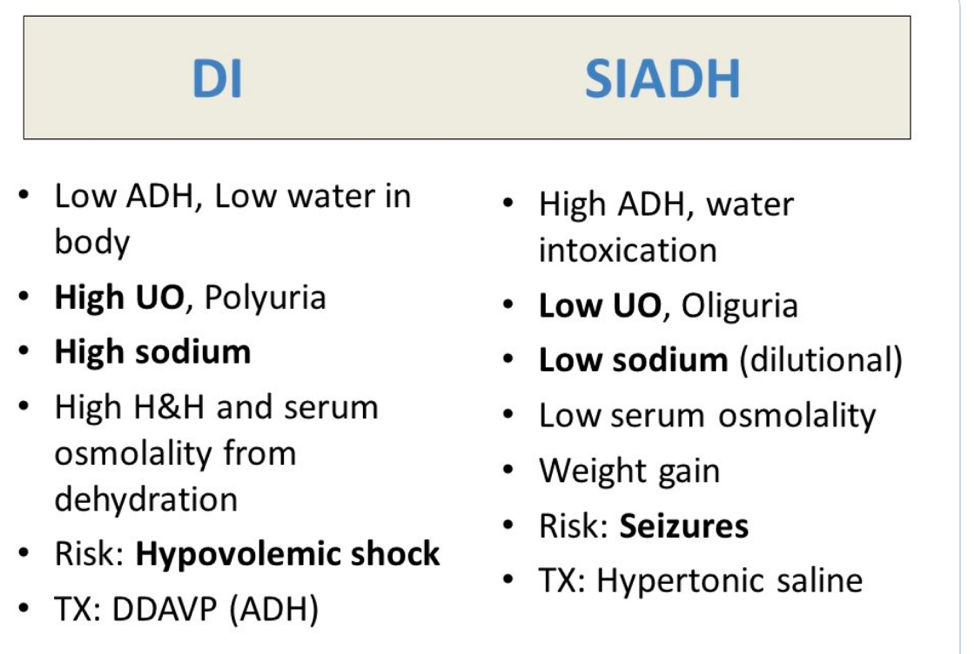
Diagnosis of syndrome of inappropriate diuretic hormone
A systematic review suggests that low sodium or the syndrome of inappropriate antidiuretic hormone secretion (SIADH) may be an early indicator for HHV-6 encephalitis. In 32 of 34 (94%) reviewed cases of sodium imbalance associated with HHV-6 encephalitis, the imbalance occurred before the onset of encephalitis. 29 (85%) of these cases were hyponatremia often with a diagnosis of SIADH. Most cases found in this review describe HHV-6 encephalitis post-hematopoietic cell transplantion, and a single case of primary infection.
This review follows recent studies that found low sodium levels precede the onset of HHV-6 encephalitis by as much as 9 days. The authors note that HHV-6 infection and sodium imbalance has also been noted in exanthem subitem cases with central nervous system dysfunction as well as in cases of DIHS/DRESS, a condition associated with frequent HHV-6B reactivation.
The mechanism behind the association with sodium imbalance is unknown. One possibility is direct infection in the tissues surrounding the hypothalamus and posterior pituitary; this has been noted in cases of diabetes insipidus associated with HHV-6 encephalitis (Kawamoto 2013). Another possibility is that IL-6 stimulates the secretion of antidiuretic hormone (Swart 2011). In some cases, both low and high sodium occurred in the same patient, with hypernatremia occurring first, followed by diabetes insipidus.

Central diabetes insipidus vs SIADH or syndrome of inappropriate diuretic hormone
The authors conclude that future studies are warranted for immunocompromised patients at risk for HHV-6 encephalitis.
Read the full paper: Victoria 2020

